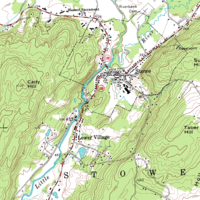
Photo from wikipedia
The Kivi area in the East Azerbaijan Province of Iran is one of the country’s highest-potential regions for metal element exploration. The primary goal herein was to process the data… Click to show full abstract
The Kivi area in the East Azerbaijan Province of Iran is one of the country’s highest-potential regions for metal element exploration. The primary goal herein was to process the data obtained from geochemical, geostatistical, and remote sensing tools (in the form of stream sediment samples and satellite images) to identify metallic mineralization anomalies in the region. After correcting the raw stream sediment geochemical data, single-variable statistical processing was performed, and Ti and Zn were identified as the elements with the highest degree of contrast. The relationship among these elements was further investigated using correlation and hierarchical clustering analyses. Principal component analysis was then applied to determine the principal components related to these elements, which were subsequently plotted on a regional geological map. Elements related to Ti and Zn were identified using threshold limits of anomalous samples determined via linear discriminant analysis. Lithological units and alteration patterns were detected through remote sensing investigations on Landsat-8 images. Stream sediment geochemical and remote sensing survey results identified anomalous areas of Ti and Zn in the eastern part of the study region. Our results indicate that Ti and Zn are good pathfinder elements for further exploratory investigation in this area.
Journal Title: Minerals
Year Published: 2020
Link to full text (if available)
Share on Social Media: Sign Up to like & get
recommendations!